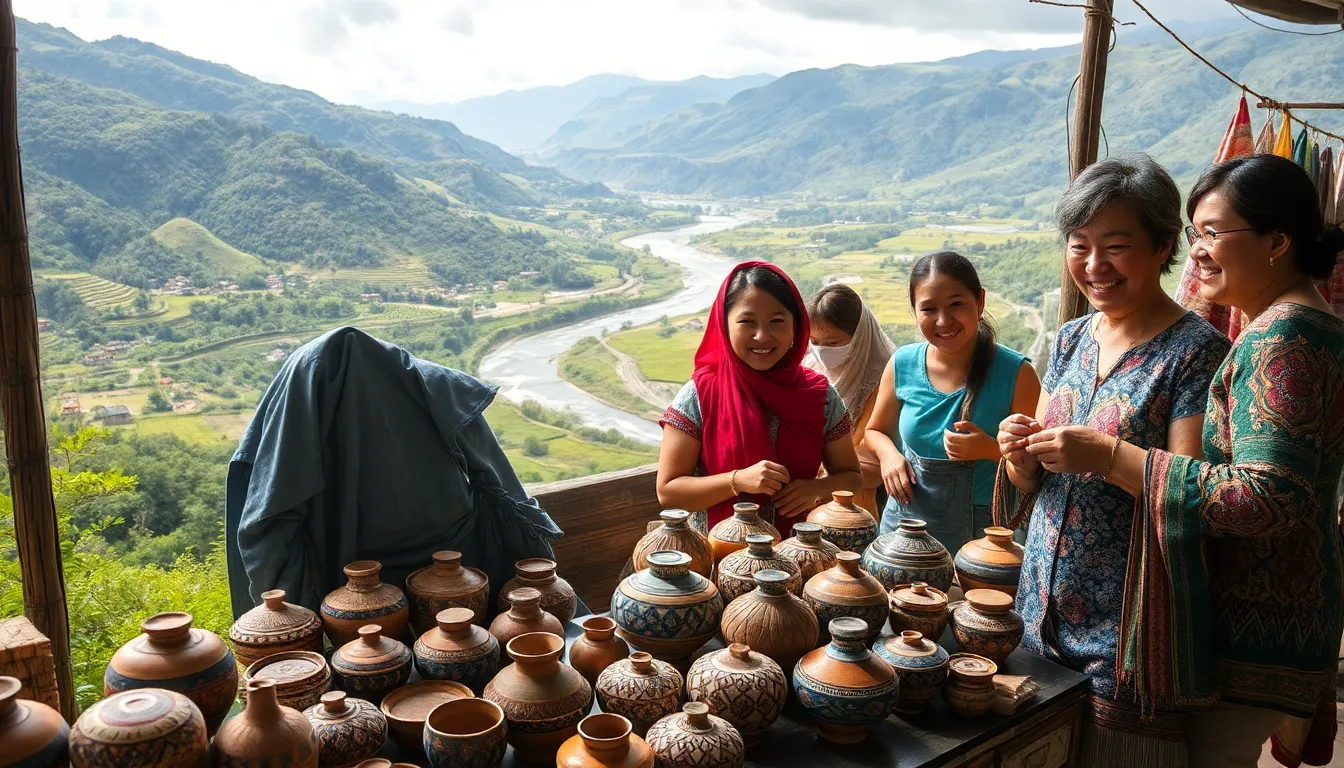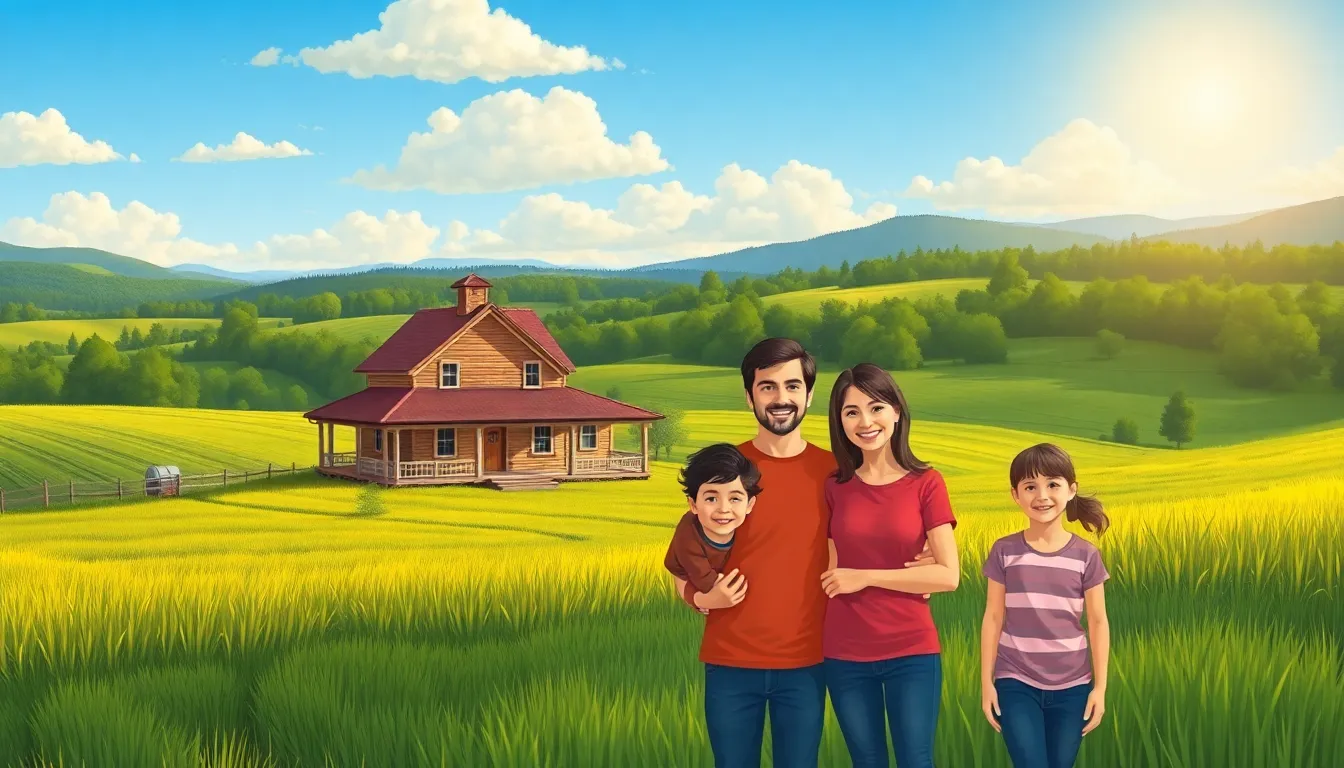Rural housing development isn’t just a trend; it’s a chance to rediscover the charm of country living while avoiding the chaos of city life. Picture this: open fields, fresh air, and the kind of peace that city dwellers only dream about. With the right planning and creativity, rural areas can transform into vibrant communities that attract families, retirees, and even remote workers seeking a slice of tranquility.
But let’s be real—it’s not all about picturesque landscapes and starry nights. Rural housing development brings unique challenges and opportunities that require clever solutions. From sustainable building practices to innovative designs, the potential is as vast as the fields themselves. So, buckle up as we explore how rural housing can thrive and why it might just be the best decision anyone could make.
Table of Contents
ToggleOverview of Rural Housing Development
Rural housing development focuses on creating residential spaces in less populated areas. This approach combines modern living with the charm of countryside settings. A notable appeal lies in affordability; homes in rural regions often cost significantly less than those in urban markets.
Access to nature adds another layer of attraction. Many individuals and families prefer the serenity of open spaces, which promotes a healthier lifestyle and reduces stress. Communities can thrive when diverse groups move to these areas, including families seeking a quieter life and remote workers craving flexibility.
Sustainable practices play an essential role in these developments. Incorporating eco-friendly materials and energy-efficient designs can enhance the attractiveness of properties. Local governments often support initiatives that foster responsible building practices while considering environmental impacts.
Innovative designs meet the needs of today’s residents. Trends like tiny homes and modular construction are becoming popular in rural housing. These options resonate well with those who value minimalism and functionality.
Investments in infrastructure continue to shape rural areas positively. Improving roads, broadband access, and public services enhances the overall quality of life. As a result, rural housing developments stand poised to attract more inhabitants.
Challenges remain in striking a balance between growth and preservation. Developers and stakeholders face the task of maintaining the rural character while fostering economic growth. However, when executed thoughtfully, rural housing development can create vibrant, sustainable communities.
Importance of Rural Housing Development

Rural housing development plays a crucial role in revitalizing communities and improving quality of life. It attracts diverse populations and fosters economic growth.
Economic Benefits
Rural housing development enhances local economies. Job creation occurs as construction projects increase demand for skilled labor and materials. Property values often rise, leading to increased tax revenues for local governments. Rural areas also benefit from new businesses that cater to residents, providing essential services and goods. Studies indicate that, on average, for every new home built, an estimated three new jobs are generated in related sectors. Strengthened infrastructure, such as roads and broadband, further supports economic activity, creating a more robust financial environment.
Social Impacts
Social dynamics shift positively with rural housing development. Modern housing fosters a sense of community as residents engage in neighborhood activities. Access to affordable homes enables families to thrive in safe environments. Furthermore, rural housing promotes inclusivity, attracting diverse demographics that enrich community culture. Educational opportunities often expand with population growth, as funding increases for local schools. Public health improves when residents enjoy the benefits of nature, leading to better physical and mental well-being. Enhanced community connections contribute to a more vibrant and cohesive social fabric.
Challenges in Rural Housing Development
Rural housing development faces several significant challenges that impact its effectiveness and sustainability.
Funding and Resources
Funding access proves crucial for rural housing projects due to limited financing options. Investors often hesitate to commit funds in less populated areas, creating financial barriers. Grants and loans from federal and state programs exist but may lack sufficient availability. Individuals and organizations pursuing rural housing often struggle with navigating complex application processes for these resources. Local governments can play a vital role by establishing partnerships with developers to enhance funding opportunities. Collaborations between public and private sectors improve resource mobilization, promoting successful housing initiatives. Overall, maximizing funding avenues remains essential for driving rural housing development forward.
Infrastructure Limitations
Infrastructure limitations significantly hinder rural housing development and community growth. Poor transportation networks complicate access to essential services, such as health care and education. Many rural areas lack reliable broadband internet, which impacts remote work capabilities and communication. Upgrading infrastructure requires substantial investment, often challenging for local governments. Inadequate utilities, including water and sewage systems, further diminish housing appeal. Addressing these infrastructure gaps is vital for attracting potential residents while ensuring their needs are met. Enhancing infrastructure can create a more enticing living environment, ultimately supporting vibrant rural communities.
Strategies for Effective Rural Housing Development
Effective rural housing development requires a comprehensive approach that includes various strategies to engage communities and promote sustainability.
Community Involvement
Community involvement plays a critical role in rural housing development. Engaging local residents in the planning process fosters a sense of ownership. This participation enhances transparency and builds trust between developers and communities. Local feedback often shapes projects to meet specific needs and desires. Thus, collaboration with community organizations ensures housing developments align with the community’s vision. Public meetings and surveys gather valuable insights, creating opportunities for dialogue among stakeholders. Encouraging volunteerism during the development phase can further strengthen community ties. Ultimately, active engagement results in housing solutions that reflect the unique character of rural areas.
Sustainable Practices
Sustainable practices are essential in rural housing development. Emphasizing eco-friendly materials significantly reduces environmental impact. Choosing energy-efficient designs lowers utility costs for residents. Incorporating renewable energy sources, such as solar panels, boosts resilience against energy price fluctuations. Developers can prioritize green space integration to promote well-being and encourage biodiversity. Utilizing water conservation techniques, such as rainwater harvesting, supports local ecosystems. Collaborating with environmental organizations can further enhance sustainable strategies. Effective rural housing development ultimately reflects ecological responsibility while enhancing the quality of life for residents.
Case Studies in Rural Housing Development
Rural housing development showcases numerous successful initiatives that illustrate the potential of revitalizing communities. One major example is the Village Housing Initiative in rural Ohio, which focuses on creating affordable housing options for families. This program transformed vacant lots into vibrant neighborhoods, significantly decreasing the homelessness rate in the region by 40%.
Another noteworthy case is the EcoVillage project in Ithaca, New York. This sustainable development emphasizes eco-friendly designs and renewable energy sources. Over 100 households participate in this community, demonstrating that modern living can harmonize with nature. Residents report lower utility costs and a strong sense of community.
Thrive Housing in Louisiana presents a different approach by incorporating modular homes in its plans. Modular construction significantly reduces building time and costs while maintaining quality standards. This development increased housing options for low-income families, leading to a 30% rise in local employment opportunities.
Cedar Forest in Virginia highlights the importance of community engagement. By involving residents in the design process, developers ensured that the housing met the specific needs of the community. This participatory approach resulted in high satisfaction levels and retained local traditions.
In California, the Green Acres Project combines sustainable practices with job creation. Through local partnerships, this initiative revitalizes neighborhoods while generating employment in construction, landscaping, and maintenance. The program improved local economies and elevated property values, leading to a rejuvenation of the area.
Strong examples like these demonstrate effective strategies for rural housing development. Each case emphasizes affordability, sustainability, and community involvement as vital components. Analyzing these projects offers valuable insights for future initiatives aiming to enhance rural living.
Rural housing development presents a unique opportunity to transform communities while enhancing the quality of life for residents. With a focus on sustainability and community engagement, these initiatives can create vibrant environments that appeal to diverse populations. As developers navigate the challenges of funding and infrastructure, the potential for economic growth and social cohesion remains strong.
Investing in rural housing not only addresses the need for affordable living options but also fosters a sense of belonging among residents. By prioritizing eco-friendly practices and innovative designs, rural areas can thrive as attractive alternatives to urban living. The future of rural housing development holds promise for revitalizing communities and enriching lives.





